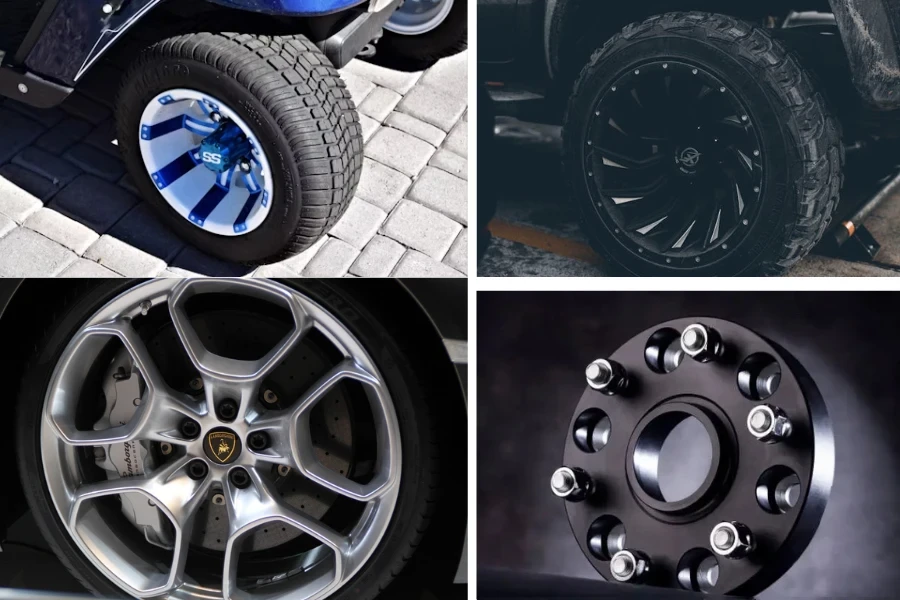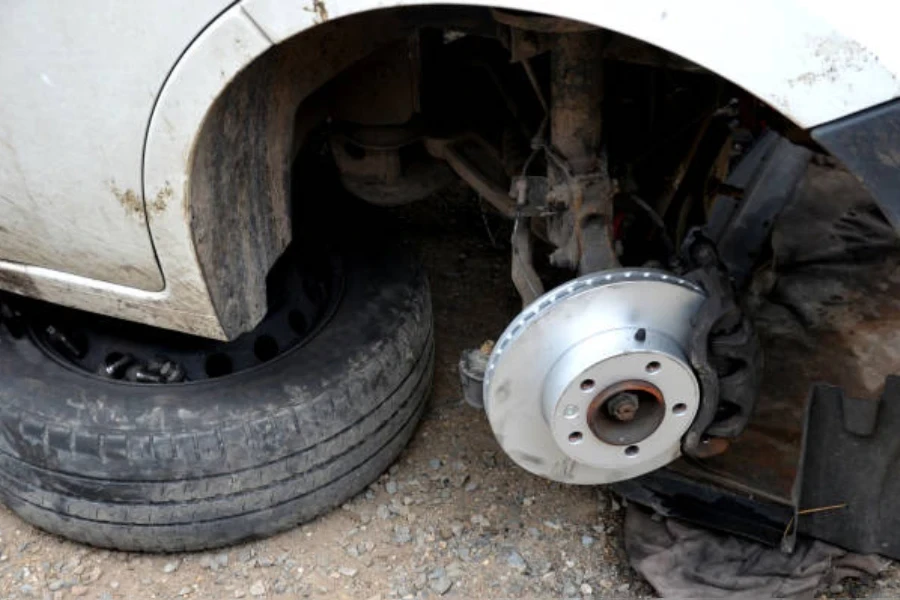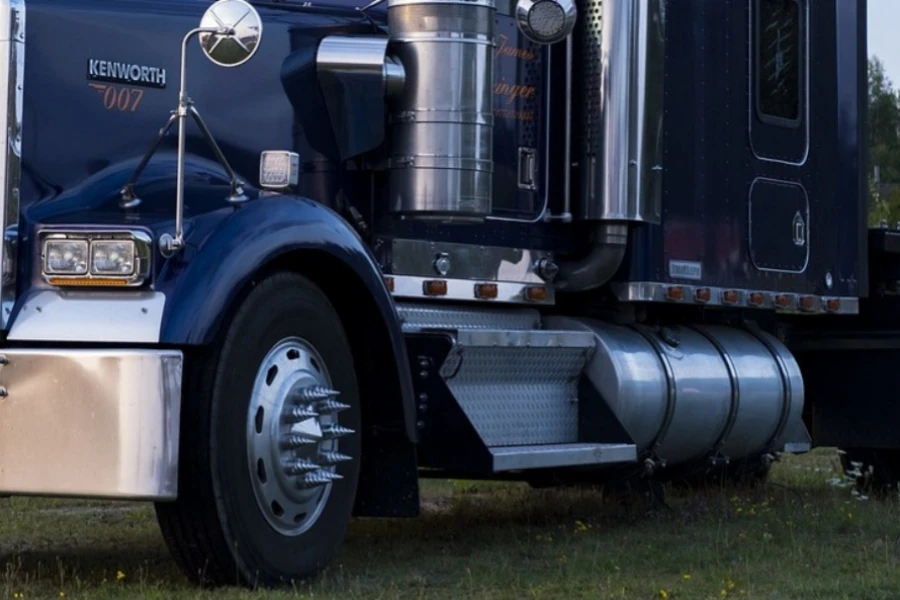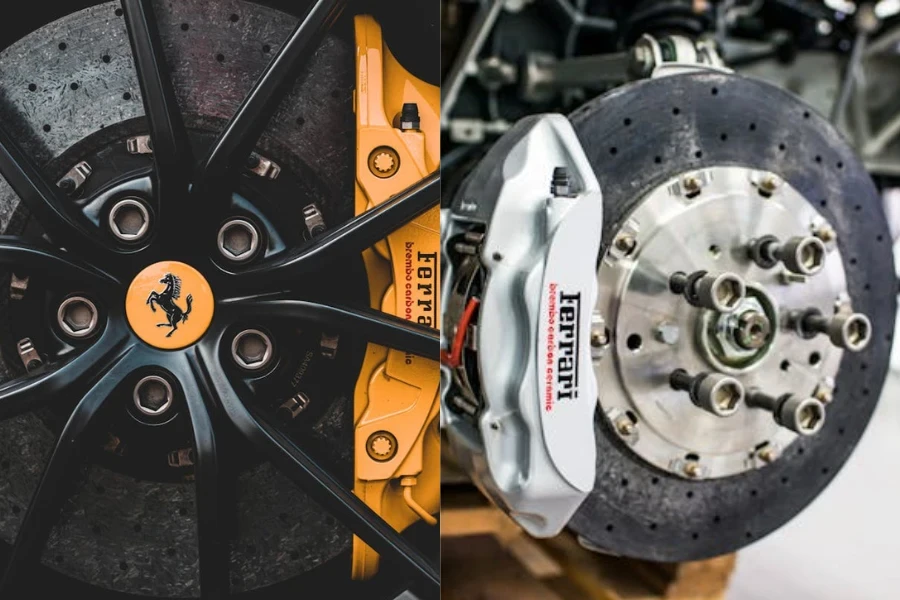Truck drivers and owners look for wheel spacers to prevent truck tyres from rubbing against the defenders. But some of these potential customers may know very little about wheel spacers. They could walk into your store frustrated and looking for guidance when their vehicle handling feels off.
Many retailers lose sales because they don’t have the right product. Fortunately, this article helps you know what customers look for when choosing wheel spacers for trucks to help you stock the right products for your buyers in 2025.
Table of Contents
The global market size for wheel spacers
Understanding wheel spacers: More than just a customization trend
Types of wheel spacers.
Key factors retailers should consider before stocking wheel spacers
Sourcing in-demand wheel spacers for your store
The global market size for wheel spacers

The latest report on the automotive wheel spacer market size shows a projected growth at a compound annual growth rate (CAGR) of 15.8%. This is expected to raise the value from US$ 421.7 million in 2022 to US$ 853.2 in 2032.
Several factors can explain the potential market growth:
- Wheel spacers are a trendy component of vehicle turning, and truck owners are likely to follow the trend.
- Demand for commercial trucks and passenger vehicles is expected to increase the demand for wheel spacers.
- A growing number of e-commerce stores and construction activities means more trucks are needed for material transportation, hence the demand for wheel spacers.
Understanding wheel spacers: More than just a customization trend

While most car owners install wheel adapters and spacers to follow cosmetic upgrade trends, truck owners want more than just an aggressive look.
Consider some reasons why truck owners install wheel spacers:
- Improved stability
Wheel spacers create additional space between the wheel hubs to improve truck handling and balance. For example, off-road drivers rely on spacers to improve the vehicle’s stability on rugged terrain and tough trails.
- Prevent tire rubbing
Wheel spacers and adapters prevent tire rubbing when truck owners upgrade to larger tires. They push the wheels outward, creating room to allow the tires to turn freely without hitting the wheel wells.
- Better braking system
Spacers also enhance the truck’s braking performance, especially when the wheels are spaced. Spacers on a fairly spaced wheel help distribute the vehicle’s weight evenly, thus enhancing the braking system.
Types of wheel spacers
Car owners buy wheel spacers to enhance their vehicle stance and create room for larger tires. They push the wheel outward to prevent the tyres from rubbing against the wheel well.
As a retailer, understanding the different types is key to helping customers make informed purchases. Here are the primary types of wheel spacers:
1. Slip-on wheel spacers

Slip-on wheel spacers slide over the existing wheel studs between the hub and the wheel without altering the wheel mounting system. They’re ideal for customers who need a small increase in wheel spacing without making significant modifications to their vehicle.
Advantages:
- Car owners can easily install and remove them.
- They’re relatively cheaper and are available in most parts of the world.
- One doesn’t need to modify their vehicles when installing the spacers.
Disadvantages:
- They have a limited size range, often up to 10mm.
- Car owners may be forced to have longer wheel studs for safety.
2. Bolt-on wheel spacers

These wheel spacers have a set of lug nuts that attach directly to the vehicle’s hub, and the wheels bolt onto the spacer. They’re ideal for larger vehicles like trucks or SUVs that need a spacing above 10mm.
Advantages
- Bolt-on spacers are wide (10 mm to 50 mm), which allows them to improve the vehicle’s stability and handling during cornering.
- They ensure proper clearance for wider wheels, thus preventing the tires from rubbing against the suspension or fenders.
- Bolt-on spacers can create an aggressive stance, improving the vehicle’s aesthetics.
Disadvantages
- These spacers place additional stress on suspension components, wheel bearings, and axles, leading to faster tear and wear.
- If poorly installed bolt-on spacers can cause wheel imbalance or vibration
- They are more expensive than slip-on spacers
3. Hub-centric wheel spacers

Hub-centric spacers have a center ring that ensures the wheel centers on the vehicle’s hub. This feature reduces vibration risk and uniformly distributes the vehicle’s weight across the hub.
Hub-centric wheel spacers are superior to lug-centric alternatives as they reduce the chance of wheel wobbling at higher speeds. They are available in different thicknesses, allowing retailers to offer a range of options to their customers.
Advantages:
- Hub-centric spacers are tailored for many vehicle models, ensuring safety and stability.
- They’re made from high-quality aluminum or steel materials, thus providing the necessary strength to handle various road conditions.
- They contribute to precise steering, improved cornering, and better vehicle handling.
Disadvantages
- Hub-centric wheel spacers can stress wheel bearings, leading to wear faster.
- These spacers are custom-made to fit specific vehicle models, making them unsuitable for less common vehicles.
4. Lug-centric wheel spacers

Unlike hub-centric spacers, lug-centric spacers center using the wheel’s lug nuts instead of the hub. They’re popular among truck enthusiasts who want to modify their vehicles for aesthetics and improved performance.
Advantages
- They push the wheels outwards, giving the truck a wider stance and visual appeal.
- They increase the truck width, which enhances the vehicle’s stability and handling performance.
- They help create clearance for larger brake calipers or custom wheels with different offsets.
Disadvantages
- Lug-centric spacers are prone to vibrations because they rely on wheels for centring.
- They transfer the vehicle’s weight and forces to the wheel studs rather than the hub, leading to premature wear or failure.
Key factors retailers should consider before stocking wheel spacers
Before stocking wheel spacers, a retailer should factor in many things to ensure profitability. Consider some unique factors that could drive sales.
Customer needs
As a retailer, it’s crucial to understand your target market. Consider whether your customers are primarily off-road enthusiasts, performance car owners, truck drivers or both. This knowledge helps in selecting the right types and sizes of wheel spacers.
Product Variety
While this article discusses truck wheel spacers, you can stock diverse products to attract a broader customer base. Stocking different sizes, thicknesses, and bolt patterns will cater to various vehicle models and increase sales.
Material and build
Most wheel spacers are made from aluminum or steel. Customers focusing solely on performance will likely prefer lightweight and rust-resistant aluminum spacers. On the other hand, truck owners or heavy-duty vehicles often prefer steel spacers for increased strength. Stock both to cater to different customer preferences.
Compatibility and fitment
Remember that there are no one-size-fits-all wheel spacers. So ensure the spacers you stock are compatible with your market’s most popular vehicle models. You can also offer a fitment guide or compatibility chart to help your customers choose the right product.
Sourcing in-demand wheel spacers for your store
If you are wondering where you can source quality wheel spacers to sell at a profit, look no further than Chovm.com. With several suppliers and manufacturers, this platform is a one-stop-shop for retailers who want to sell quality products hassle-free.
Bulk purchases give you pricing advantages, and you can partner with your desired brand. The partnership ensures you stock quality and safe products for your customers.





 বাংলা
বাংলা Nederlands
Nederlands English
English Français
Français Deutsch
Deutsch हिन्दी
हिन्दी Bahasa Indonesia
Bahasa Indonesia Italiano
Italiano 日本語
日本語 한국어
한국어 Bahasa Melayu
Bahasa Melayu മലയാളം
മലയാളം پښتو
پښتو فارسی
فارسی Polski
Polski Português
Português Русский
Русский Español
Español Kiswahili
Kiswahili ไทย
ไทย Türkçe
Türkçe اردو
اردو Tiếng Việt
Tiếng Việt isiXhosa
isiXhosa Zulu
Zulu